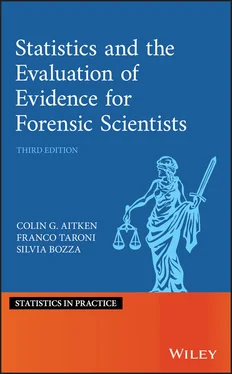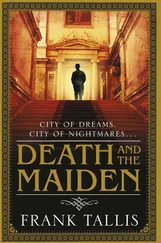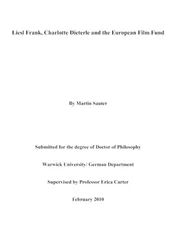Franco Taroni - Statistics and the Evaluation of Evidence for Forensic Scientists
Здесь есть возможность читать онлайн «Franco Taroni - Statistics and the Evaluation of Evidence for Forensic Scientists» — ознакомительный отрывок электронной книги совершенно бесплатно, а после прочтения отрывка купить полную версию. В некоторых случаях можно слушать аудио, скачать через торрент в формате fb2 и присутствует краткое содержание. Жанр: unrecognised, на английском языке. Описание произведения, (предисловие) а так же отзывы посетителей доступны на портале библиотеки ЛибКат.
- Название:Statistics and the Evaluation of Evidence for Forensic Scientists
- Автор:
- Жанр:
- Год:неизвестен
- ISBN:нет данных
- Рейтинг книги:3 / 5. Голосов: 1
-
Избранное:Добавить в избранное
- Отзывы:
-
Ваша оценка:
Statistics and the Evaluation of Evidence for Forensic Scientists: краткое содержание, описание и аннотация
Предлагаем к чтению аннотацию, описание, краткое содержание или предисловие (зависит от того, что написал сам автор книги «Statistics and the Evaluation of Evidence for Forensic Scientists»). Если вы не нашли необходимую информацию о книге — напишите в комментариях, мы постараемся отыскать её.
he leading resource in the statistical evaluation and interpretation of forensic evidence
The third edition of
is fully updated to provide the latest research and developments in the use of statistical techniques to evaluate and interpret evidence. Courts are increasingly aware of the importance of proper evidence assessment when there is an element of uncertainty. Because of the increasing availability of data, the role of statistical and probabilistic reasoning is gaining a higher profile in criminal cases. That’s why lawyers, forensic scientists, graduate students, and researchers will find this book an essential resource, one which explores how forensic evidence can be evaluated and interpreted statistically. It’s written as an accessible source of information for all those with an interest in the evaluation and interpretation of forensic scientific evidence.
Discusses the entire chain of reasoning–from evidence pre-assessment to court presentation; Includes material for the understanding of evidence interpretation for single and multiple trace evidence; Provides real examples and data for improved understanding. Since the first edition of this book was published in 1995, this respected series has remained a leading resource in the statistical evaluation of forensic evidence. It shares knowledge from authors in the fields of statistics and forensic science who are international experts in the area of evidence evaluation and interpretation. This book helps people to deal with uncertainty related to scientific evidence and propositions. It introduces a method of reasoning that shows how to update beliefs coherently and to act rationally. In this edition, readers can find new information on the topics of elicitation, subjective probabilities, decision analysis, and cognitive bias, all discussed in a Bayesian framework.

 be any event and let
be any event and let  denote the probability that
denote the probability that  occurs. Then
occurs. Then  . For an event that is known to be impossible, the probability is zero. Thus if
. For an event that is known to be impossible, the probability is zero. Thus if  is impossible,
is impossible,  . For an event that is known to be certain, the probability is one. Thus, if
. For an event that is known to be certain, the probability is one. Thus, if  is certain,
is certain,  . This law is sometimes known as the convexity rule (Lindley 1991).
. This law is sometimes known as the convexity rule (Lindley 1991). are black and a proportion
are black and a proportion  white, with no other colours present, such that
white, with no other colours present, such that  . Proportions lie between 0 and 1; hence
. Proportions lie between 0 and 1; hence  . For any event
. For any event  . Consider
. Consider  , the drawing of a black ball. If there are no black balls in the urn, this event is impossible then
, the drawing of a black ball. If there are no black balls in the urn, this event is impossible then  . This law is sometimes strengthened to say that a probability can only be 0 when the associated event is known to be impossible.
. This law is sometimes strengthened to say that a probability can only be 0 when the associated event is known to be impossible. and
and  be two events. One form of combination is to consider the event ‘
be two events. One form of combination is to consider the event ‘  and
and  ’, the event that occurs if and only if
’, the event that occurs if and only if  and
and  both occur, sometimes denoted
both occur, sometimes denoted  . This is known as the conjunction of
. This is known as the conjunction of  and
and  .
. denote the throwing of an odd number. Let
denote the throwing of an odd number. Let  denote the throwing of a number greater than 3 (i.e. a 4, 5, or 6). Then the event ‘
denote the throwing of a number greater than 3 (i.e. a 4, 5, or 6). Then the event ‘  and
and  ’ denotes the throwing of a 5.
’ denotes the throwing of a 5. denote the throwing of a six with the first die. Let
denote the throwing of a six with the first die. Let  denote the throwing of a six with the second die. Then the event ‘
denote the throwing of a six with the second die. Then the event ‘  and
and  ’ denotes the throwing of a double 6.
’ denotes the throwing of a double 6. or
or  ’, the event that occurs if
’, the event that occurs if  or
or  (or both) occurs. This is known as the disjunction of
(or both) occurs. This is known as the disjunction of  and
and  .
.










